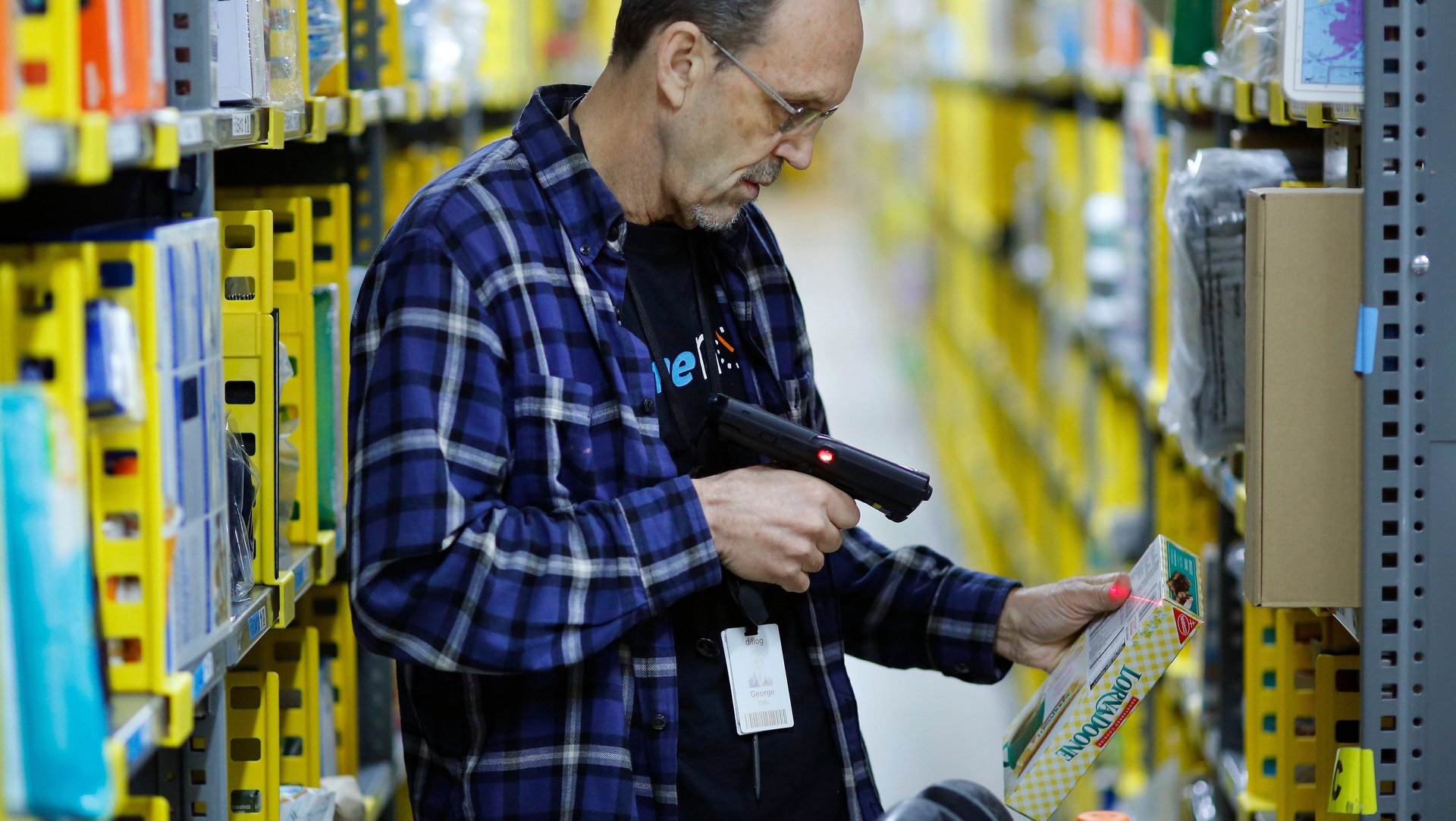How tracking worker productivity could actually make Amazon warehouses less efficient
Amazon earlier this year patented a wristband tracking system for its warehouse workers. It has said that the idea was not to spy on workers, but rather to use employee location and activity information to help guide employees to items they’re supposed to pick from shelves, by using “haptic feedback” delivered through the same wristband.


Amazon earlier this year patented a wristband tracking system for its warehouse workers. It has said that the idea was not to spy on workers, but rather to use employee location and activity information to help guide employees to items they’re supposed to pick from shelves, by using “haptic feedback” delivered through the same wristband.
Though Amazon has not committed to actually producing the wristbands, some worry that if it did so, such devices would inevitably become monitoring systems.
Using wristbands for behavior measurement is not a new idea, but Amazon would do well to heed lessons from other large companies that have tried it in the past.
Tesco, a large British supermarket chain, for instance, infamously installed a similar system in its distribution centers. According to employees, it used the data it collected to curtail bathroom breaks and set efficiency targets for specific behaviors.
Perhaps not coincidentally, Tesco’s performance started to go downhill at exactly the same time.
Why did the company’s performance suffer when individual productivity could be monitored? I’d argue it’s because individual productivity is separate from group performance. In research my company has conducted in large technology companies using digital communication data, sensors to detect face-to-face interaction, and performance data across hundreds of thousands of our clients’ employees, we’ve found that temporary 1% reductions in efficiency provide time for unstructured employee interaction time that yields three-fold increases in group performance over the long term. That’s because in groups that interact, individuals share what they’ve learned about how to work more productively.
While some increases in efficiency may yield short-term improvements, they cap the potential of the entire company. Ensuring some degree of flexibility in working hours is critical for long-term success.
Aside from group productivity, tracking workers through a wristband could also negatively impact turnover. Nobody likes to be micromanaged. The costs associated with an employee leaving a company is around 25% of his or her yearly salary. Assuming that the Amazon employee reaction would be similar to what was observed at Tesco, a 10% increase in turnover would not be unexpected. For Amazon, this would roughly equate to an additional cost of approximately $300 million/year.
If Amazon were to use a tracking wristband the way it says it would—to create a truly opt-in program with no individual tracking in order to help guide workers to work better—it could be a big win. But using wristbands to spy on workers wouldn’t just be bad for workers—as most criticism of Amazon’s patented idea reasonably points out—it would also be bad for Amazon
Ben Waber is the president and CEO of Humanyze.